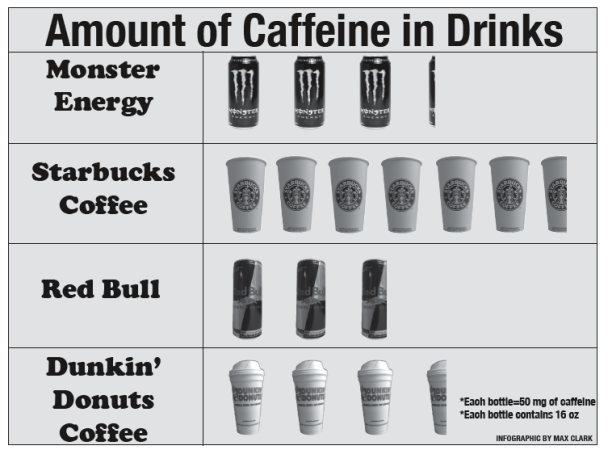A quick burst of energy in a cheap can is no big deal, right? Seemingly a dream come true for students who endure numerous sleepless night throughout the school year, energy drinks are growing in popularity among students.
Unfortunately, nutrition facts on the backs of various energy drinks show that these drinks are loaded with sugar. Sadly, they are not only used for a shot of energy but to also get tipsy, buzzed, or worse.
Nutrition facts on energy drinks show that they contain very few vitamins. In fact, they contain around 25 grams of sugar and 75 milligrams of caffeine. Some energy drinks feature alcohol: Four Lokos. Four Lokos have 12 percent alcohol, 60 grams of sugar, and contain as much caffeine as a cup of coffee. Furthermore the mix of energy drinks (a stimulant) and alcohol (a depressant), is a very risky duo and can cause heart disease, dehydration, or worse.
“I love them [Four Lokos] because they get you drunk and are really cheap,” an anonymous Panther said. “I’m not even 21 and I can still snag a Loko. They are so easy to get.”
Other energy drinks such as Monster, Rockstar, and Red Bull do not have alcohol within them but still cannot be considered healthy if used excessively. Studies have shown that energy drinks indeed give the consumer energy, but the consumer must note the majority of the energy comes from caffeine and sugar. A can of Red Bull has about 80 mg of caffeine. Manufacturers of energy drinks are not required to include caffeine content on food labels. If large amounts of an energy drink are consumed in a short period of time, the drinker may experience drowsiness and irritability.
“I have been drinking them for a long time,” sophomore Valentina Rojas said. “Red Bull helps me get hyper when I’m feeling low.”
Numerous students are aware of energy drinks’ unwholesome nature but feel they are necessary to survive the school day.
“I know they are unhealthy,” junior Tatiana Schaefer said, “but since I study so much I need them to keep me awake,”



